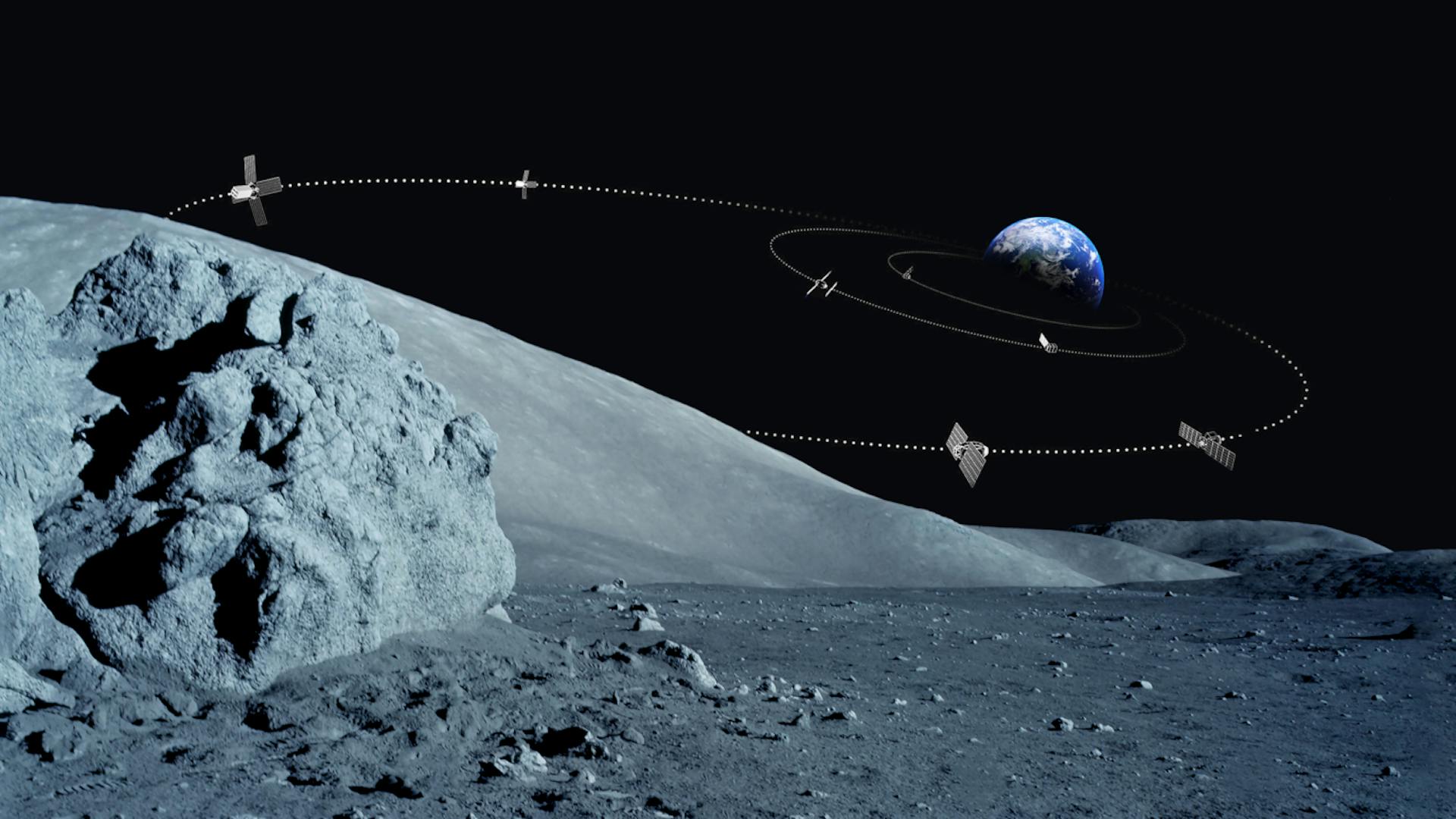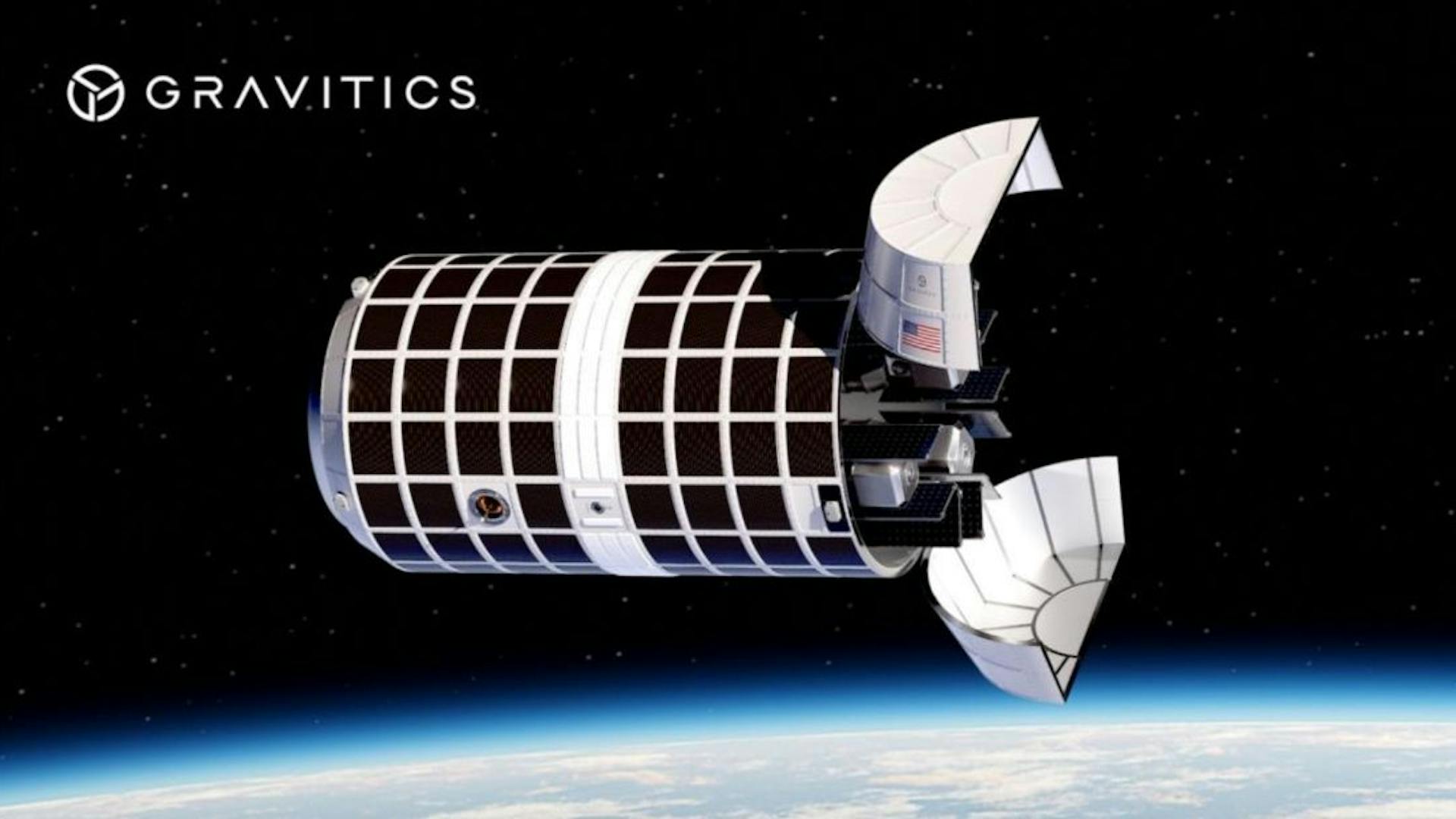After stints at SpaceX, three brothers want to build spacecraft powered by moon water
April 13, 2022
Article by TechCrunch

After stints at SpaceX, three brothers want to build spacecraft powered by moon water
A new startup founded by a trio of SpaceX veterans — who happen to be brothers — aims to build an in-space transportation network, using reusable spacecraft propelled by water harvested from the moon.
Argo Space Corporation, founded by Robert Carlisle, Ryan Carlisle and Kirby Carlisle, is betting that lunar propellant will untether space activities from Earth — and unlock a bustling economy beyond low Earth orbit (LEO).
Their plan takes aim at several key limitations of the space economy: First, all existing orbital transport vehicles are focused on LEO, not more demanding orbits like geosynchronous (GEO) or cislunar. Second, none of these vehicles are reusable. Third, there’s no method of refueling even a theoretical reusable vehicle. And last, any such method would likely depend on Earth-based resources for propellant.
Hermosa Beach-based Argo aims to solve these limitations. The company’s first spacecraft is called the Argonaut, after the famous seafaring heroes of Greek mythology. The Argonaut is designed to be reusable and refuelable, and with the ability to perform energy-intensive transfers to GEO and beyond. But the whole operation would depend on lunar water, which the company plans to harvest and store in-space for refueling.
Water as a choice of spacecraft fuel is not a novel concept. In 2021, NASA launched a demonstrator CubeSat carrying a pint of water to test a novel water-based propulsive method. While Argo is not disclosing too many details about their system, the company did clarify that it will use a water plasma thruster.
“We look at this a lot like the California Gold Rush, where we are going to be commercializing this resource on the moon — water — and that’s going to enable a whole lot of other companies to build up their businesses, go after other new resources and bring new capabilities into the space that otherwise wouldn’t be possible or at all or economical without a service like ours,” COO Kirby Carlisle explained.
A water-based architecture
The company’s plan is an ambitious one, but it has attracted the attention of investors. Argo recently closed a $2 million funding round led by Type One Ventures, with participation from Boost VC, Stellar Ventures and Earthrise Ventures, to continue development on its tech.
No doubt the investors were impressed by the founders’ experience: All three brothers worked at SpaceX, with CTO Ryan Carlisle most recently acting as director of launch engineering, where he led large engineering teams on projects including Falcon and Starship. He also worked on an in-space refueling system project, part of a contract NASA awarded SpaceX in 2020.
Argo’s focus on water as a propellant partly stems from Ryan’s experience working with cryogenic propellants, like liquid oxygen, methane and hydrogen, he said in an interview.
“Cryogens are not fun to work with,” he said. One reason is because they need to be stored at extremely low temperatures to remain in a liquid state — but such extreme lows can affect the material properties of things like actuators, seals and the other essential components of a propulsion system.
Kirby, who worked on post-launch refurbishment of the Falcon 9 and Falcon Heavy vehicles at SpaceX and is now Argo’s COO, also experienced the difficulty of working with cryogenic fuels.
“Working in refurbishment on the launch vehicles, I saw repeatedly that made it very difficult to easily reuse components, especially in a rapid manner,” he said. “Sealing, as Ryan mentioned, is a massive problem.”
Water, on the other hand, is “serendipitously good as a medium to work with,” Ryan said. It doesn’t have the same corrosive effects on materials, for one. One of its biggest upsides, especially for Argo’s plans, is that it can be stored for long periods. This makes it a useful propellant for in-space refueling depots and for long-duration missions.
Argo has a long way to go before its vision can be fully realized, however. While the company says it has figured out its lunar water extraction process, it still needs to get hardware on the moon and prove out its plan. Argo CEO Robert Carlisle said the company wanted to be on the moon, processing regolith and turning it into water, in the late 2020s. Recent missions, including NASA’s Stratospheric Observatory for Infrared Astronomy and China’s Chang’e-5, have uncovered the existence of water on even the sunlit portions of the moon, which will no doubt make Argo’s initial plans much more technically straightforward.
“We are talking to all the lander and rover companies you might imagine about getting a first demo down,” Robert said.
Until then, the company plans to generate revenue from in-space transportation services, with Argonauts that use water from Earth as propellant. The spacecraft could also be used for satellite inspections or even orbital debris removal, thanks to its ability to rendezvous with other objects in space.
The next big milestone for the company will be an initial demonstration mission scheduled for late 2024, to prove out the propulsion technology and the spacecraft capture mechanism. Robert, who was SpaceX’s director of commercial launch sales and had also worked as director of national security satellite sales, said Argo’s transportation network could solve the pain point for small satellites getting access to higher energy orbits beyond LEO.
“People would come to me at SpaceX and try to find these secondary rideshare launches,” he said. “It’s hard, it’s expensive. It’s difficult to build a business around that. So we combined Ryan’s lunar resource idea with this idea of more abundant, accessible transportation — not just in low Earth orbit, going all the way to geostationary orbit or lunar orbits.”


